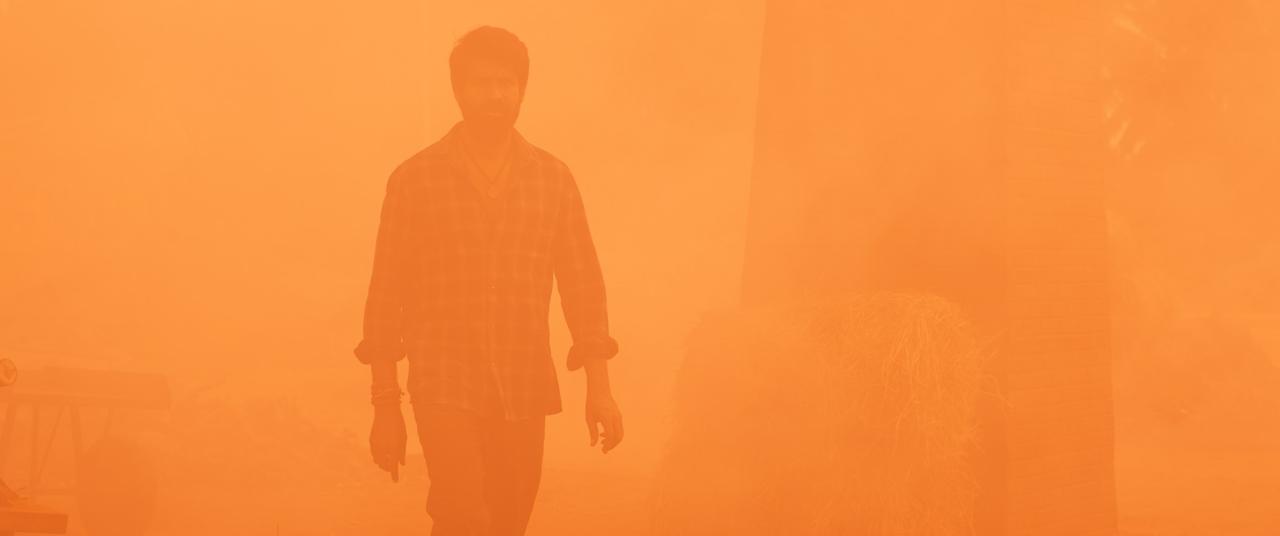
Garudan: Arthur A Wilson
Jun 06 2024
Cinematographer Arthur A Wilson who is known for innovative visuals he had been creating for years, with different genres and approach.


His recent film Garudan which is receiving positive response from audiences and critic alike.
Arthur Wilson cinematography is much appreciated.
Veteran Cinematographer Arthur Wilson shares his visual approach to SICA.
Arthur Wilson discussing his cinematographic techniques in the film “Garudan”:
Q: “Garudan” has been praised for its unique visual storytelling. Can you elaborate on your choice of lenses throughout the film?
Arthur Wilson: I decided to use just two focal length lenses for the entire film. This limitation challenged us to be more creative with our shots and compositions. By sticking to these two lenses, we were able to maintain a consistent visual style that complements the narrative’s intensity and emotional depth.
Q: Can you elaborate on the focal length of the lenses used?
Arthur Wilson: I used just two lenses through out the film one is 25mm and another 35 mm
But 25mm was over 90 percent of the film, the next 35mm was for B camera setups.
Q: Cameras and lenses you preferred?
Arthur Wilson: It was not a preference, it is a decision to shoot a film in a particular way
I choose Sony Venice 2 which I am already familiar with and Cooke Panchro I series as my optics

Q: The composition of your shots is striking. Can you explain your use of the golden rule in “Garudan”?
Arthur Wilson:The golden third rule played a crucial role in our compositions. We placed characters and key elements at the intersection points of the spiral to create a visually compelling and harmonious frame. To ensure precision, we stuck a transparent golden rule of thirds plastic paper on the monitor, allowing us to maintain the exact composition throughout the shoot.



Q: The film’s climax features a distinctive reddish-orange background. What inspired this choice, and how did you achieve it?**
Arthur Wilson:The reddish-orange background in the climax was chosen to symbolize the intense and chaotic nature of the story’s conclusion. We utilized a single color scheme to heighten the emotional impact and create a memorable visual experience. This approach helped to unify the scene and draw the audience’s attention to the characters’ final moments.

Q: Action sequences in “Garudan” are notably dynamic. How did you approach the choreography of these stunts?
Arthur Wilson:We focused on creating long, intricately choreographed stunt sequences. This not only added realism but also allowed the audience to fully engage with the action. We worked closely with the stunt team to ensure that each movement was meticulously planned and executed, contributing to the film’s overall sense of tension and excitement.
Q: You avoided traditional crane and drone shots, except for a few geographical purposes. What was your reasoning behind this choice?
Arthur Wilson:Traditional crane and drone shots can sometimes create a sense of detachment. For “Garudan,” we wanted the audience to feel more connected to the characters and the environment. By minimizing these shots, we kept the camera closer to the action, enhancing the film’s immersive quality. We did use them sparingly for establishing geographical context, but overall, our focus was on more grounded and intimate cinematography.
Q: Can you share any challenges you faced while adhering to these techniques and how you overcame them?
Arthur Wilson:One of the main challenges was maintaining consistency with the golden spiral composition throughout the film. It required a lot of attention to detail and patience from the entire team. Another challenge was choreographing the long stunt sequences, which demanded extensive rehearsal and coordination. However, with a dedicated crew and a clear vision, we were able to overcome these obstacles and create a visually cohesive and engaging film.
Article by
CJ Rajkumar
Author/ Cinematographer
